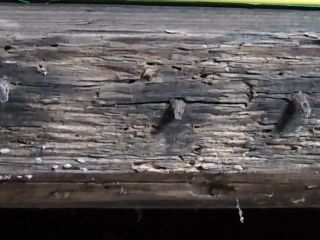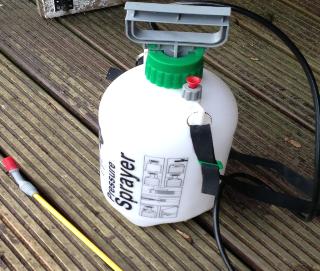Woodworm is not normally a serious problem unless structural timbers have been seriously affected. If structural timbers are not seriously affected then treatment is easy and is well within the realms of the DIY'er. Woodworm is a very common pest and will have affected most properties at one time or another.

Identifying woodworm is easy as tiny holes, know as flight holes are left all over the timber, saw dust may also be present below the timber. Woodworm infects both soft and hardwood but prefers soft wood. The holes are left behind when the larvae of the beetle exits the timber, these holes are normally 1.5 - 2.0 mm in diameter. There are more than one species of beetle which cause woodworm.
Specialist companies exist which treat wet rot, dry rot, woodworm, rising damp and wall ties. They will probably try and tell you that woodworm needs treating by a specialist as the correct species of beetle needs identifying. I don't believe this as you can buy off the shelf woodworm treatment which is not intended for any particular species of beetle. I'd choose a wood preserver and insecticide that covers Dry rot, Wet rot and woodworm and treat all the timber in one go!
To see if the wood needs replacing or to find out just how much damage has been caused by the woodworm give it a poke with a screwdriver and see exactly how much timber has been affected. If the wood crumbles badly into little pieces the timber may need replacing but in most cases it is not too serious. Woodworm normally only effects the outside of the timber leaving the "heartwood" intact, you are very unlucky if the timber needs replacing!Often you will find that the woodworm infestation occurred decades ago and is no longer a problem, still treat all timber to prevent future re-infestations. Treatment is normally not too difficult but can mean that you cannot live in the building for a day or so after treatment as the chemicals used are harmful to health! Obviously because the property cannot be occupied for a day or so after treatment it is a good idea to treat all of the property in one go, all pets should be removed from the property and all people that are not doing the job. Lift about every 7th or 10th floorboard through out the property and obtain a good garden sprayer with a hose and lance as this can be used an any angle and can easily be used in the void between the ceiling and the floor above. Ensure you have the correct face mask, goggles and gloves and spray all of the timber in the house with the treatment, then secure the property and leave it empty for as long as the manufacturer of the treatment specifies.

Using a garden sprayer can speed up the job considerably but care must be taken. You must ensure that no one is in the building (including pets) and the correct PPE must be worn.



